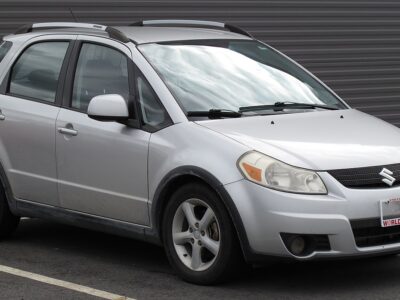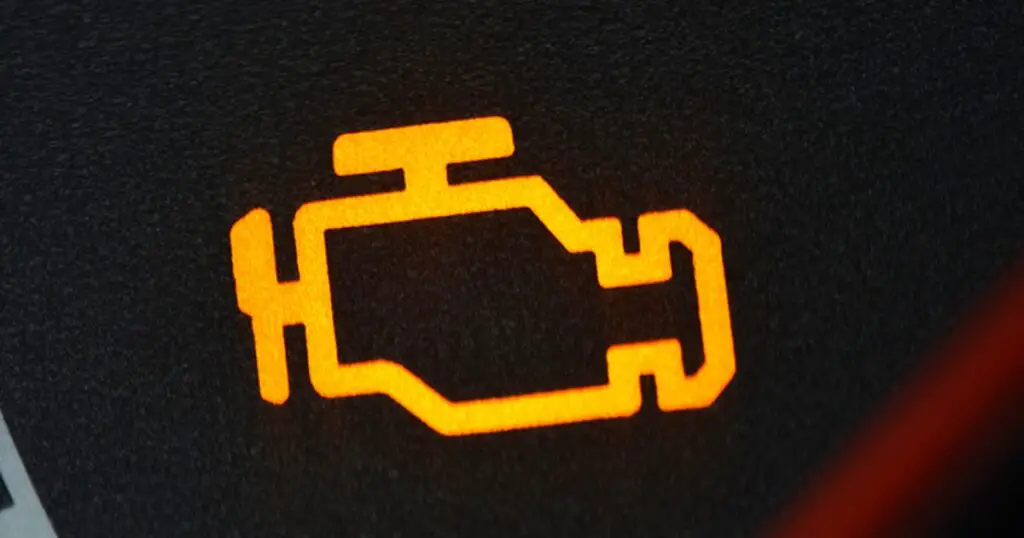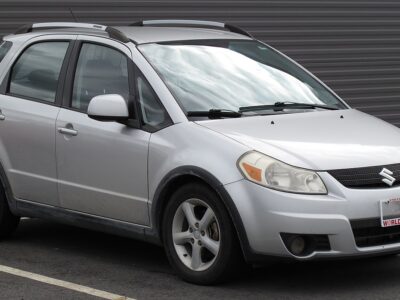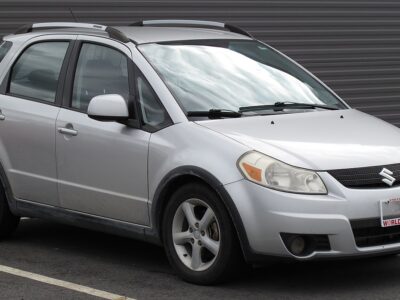
Solve Your Fiat 500 Check Engine Light Problem: A Complete Guide


How to Diagnose the Check Engine Light on a Fiat 500
The check engine light on a Fiat 500 can be a warning sign of a variety of different issues. This light can indicate a minor problem, such as a loose gas cap, or it can indicate a more serious issue, such as a malfunctioning catalytic converter. Diagnosing the check engine light on a Fiat 500 can help you determine the severity of the issue and whether or not you need to take your car to a professional.
Step 1: Check the Gas Cap
The most common reason for the check engine light to come on is a loose or broken gas cap. Inspect the gas cap to make sure it is securely in place and not damaged. If the gas cap appears to be loose or damaged, replace it with a new one and see if the check engine light turns off.
Step 2: Read the Error Code
If the check engine light does not turn off after replacing the gas cap, you can use a scan tool to read the error code that is triggering the light. This code can help you diagnose the issue.
Step 3: Check the Air Filter
If the error code indicates a problem with the air filter, check the air filter to make sure it is clean and not clogged. If it is clogged, replace it with a new one and see if the check engine light turns off.
Step 4: Have the Vehicle Diagnosed by a Professional
If the error code indicates a more serious issue, such as a malfunctioning catalytic converter, it is best to have the vehicle diagnosed by a professional. A professional mechanic can help you determine the best course of action to take to fix the issue.
Fiat 500 Check Engine Light: Common Causes and Solutions
The Fiat 500 is a small, stylish, and sporty vehicle, but like all cars, it can sometimes run into problems. One of the most common issues is when the check engine light appears. This can be caused by a range of issues, from something minor to something more serious.
Common Causes of Fiat 500 Check Engine Lights
- Loose or Faulty Gas Cap
- Faulty Oxygen Sensor
- Faulty Mass Air Flow Sensor
- Faulty Spark Plugs
- Faulty Ignition Coil
When the check engine light appears on your Fiat 500, the first thing you should do is to take your car to a mechanic to have it properly diagnosed. The mechanic will connect the car to a diagnostic computer and scan the engine for trouble codes. The trouble codes will tell the mechanic what is wrong with the car and what needs to be fixed.
Solutions for Fiat 500 Check Engine Lights
You may be interested in reading Replace Your Fiat 500 Key Fob Shell Quickly and Easily
Replace Your Fiat 500 Key Fob Shell Quickly and Easily- Tighten or Replace the Gas Cap
- Replace the Oxygen Sensor
- Replace the Mass Air Flow Sensor
- Replace the Spark Plugs
- Replace the Ignition Coil
Depending on the cause of the check engine light, the mechanic may recommend that you replace certain parts of your Fiat 500. This could include replacing the gas cap, oxygen sensor, mass air flow sensor, spark plugs, or ignition coil. Replacing these parts can help to restore your Fiat 500 to its proper running condition and turn off the check engine light.
Finally, make sure to keep up with regular maintenance on your Fiat 500. This includes oil changes, spark plug replacements, and other tune-up items. Doing so can help to prevent the check engine light from appearing in the first place.
What To Do When the Fiat 500 Check Engine Light Comes On
If you're a Fiat 500 owner, you know that the check engine light can come on for a variety of reasons. While some of these issues can be minor, others may be more serious. In either case, it's important to take the necessary steps to ensure that your vehicle is running properly and safely. Here are some tips for what to do when your Fiat 500 check engine light comes on.
Check the Gas Cap
One of the most common causes of a check engine light is a loose or missing gas cap. Make sure to inspect your gas cap and tighten it if necessary. If the gas cap is missing, replace it with a new one.
Check Your Fluids
If the gas cap is not the issue, then you should check all of your vehicle's fluids. Make sure that the engine oil, brake fluid, transmission fluid, and coolant are all at the proper levels. If any of the fluids are low, add more as needed.
Check the Battery
Another possible cause of a check engine light is a weak or dead battery. If the battery is weak or dead, it may be time to replace it. Make sure to inspect the battery terminals for any corrosion or dirt, and clean them if necessary.
Inspect the Air Filter
If the battery is not the issue, then you should inspect the air filter. Make sure that the filter is clean and replace it if necessary. A dirty air filter can reduce engine performance and cause the check engine light to come on.
Finally, if none of the above steps resolves the issue, then it's time to take your Fiat 500 to a qualified mechanic for further inspection. The mechanic can diagnose the issue and provide the necessary repairs.
Understanding the Check Engine Light on a Fiat 500
The check engine light is one of the most important indicators of a car’s health, and understanding how to read it is key for Fiat 500 owners. This light can be a sign of a minor issue or a more serious one, and it’s important to know the difference.
What the Check Engine Light Means
You may be interested in reading Replace Your Fiat 500 Key Fob Shell Quickly and Easily
Replace Your Fiat 500 Key Fob Shell Quickly and Easily Maximize Your Fiat 500's Mileage with Tips on Flashing
Maximize Your Fiat 500's Mileage with Tips on FlashingWhen the check engine light appears on the Fiat 500’s dashboard, it typically indicates that the car’s computer has detected a fault in one of the car’s systems. The fault could be something minor, like a loose gas cap, or something more serious, like a malfunctioning catalytic converter.
What to Do When the Check Engine Light Comes On
When the check engine light comes on, it’s important to take the car to a mechanic for a diagnostic check as soon as possible. A diagnostic check will determine the cause of the issue and allow the mechanic to take the necessary steps to fix it.
The Benefits of Regular Checkups
Regular checkups are important for the health of the Fiat 500. During a checkup, the mechanic can check for any potential issues with the car and take the necessary steps to prevent any serious problems from occurring. Additionally, regular checkups can help keep the car running efficiently and extend its lifespan.
How to Avoid Check Engine Light Issues
The best way to avoid check engine light issues is to follow the car’s maintenance schedule. This includes regularly checking the oil, air filter, and other fluids, as well as changing the spark plugs and other components as recommended by the manufacturer. Additionally, it’s important to have the car serviced regularly to ensure that all of the car’s systems are functioning properly.
Troubleshooting Your Fiat 500 Check Engine Light Issue
Troubleshooting a Check Engine Light on your Fiat 500 is an important part of taking care of your car. When the light comes on, it indicates that there is a problem with your vehicle's engine or emission control system. There are several possible causes of a Check Engine Light, including faulty sensors, dirty fuel injectors, and a faulty catalytic converter.
The first step in troubleshooting your Fiat 500's Check Engine Light is to check the vehicle's diagnostic trouble codes (DTCs). This can be done by connecting a diagnostic scanner to the car's on-board diagnostic port. The scanner will read the codes and provide a description of the issue. Common codes include P0201, P0202, and P0203, which indicate a fuel injector problem.
Inspecting the Engine Components is another important step in troubleshooting the Check Engine Light. You should check the air filter, spark plugs, fuel injectors, and other components for signs of damage or wear. If any of the components are not functioning properly, they should be replaced or repaired.
You may be interested in reading Replace Your Fiat 500 Key Fob Shell Quickly and Easily
Replace Your Fiat 500 Key Fob Shell Quickly and Easily Maximize Your Fiat 500's Mileage with Tips on Flashing
Maximize Your Fiat 500's Mileage with Tips on Flashing How to Upgrade Your Radio in a Fiat 500 - A Comprehensive Guide
How to Upgrade Your Radio in a Fiat 500 - A Comprehensive GuideChecking the Emission Control System is also important when troubleshooting the Check Engine Light. The emission control system includes the catalytic converter, oxygen sensor, and other components. If any of these components are malfunctioning, they should be replaced or repaired.
Testing the Vehicle's Fuel System is the last step in troubleshooting the Check Engine Light. You should check the fuel pressure and check the fuel filter for signs of blockage or damage. If the fuel pressure is low, the fuel filter should be replaced. If the fuel filter is damaged, it should be replaced as well.
If you want to know other articles similar to Solve Your Fiat 500 Check Engine Light Problem: A Complete Guide you can visit the category Service and Parts.
Deja una respuesta




More content of your interest